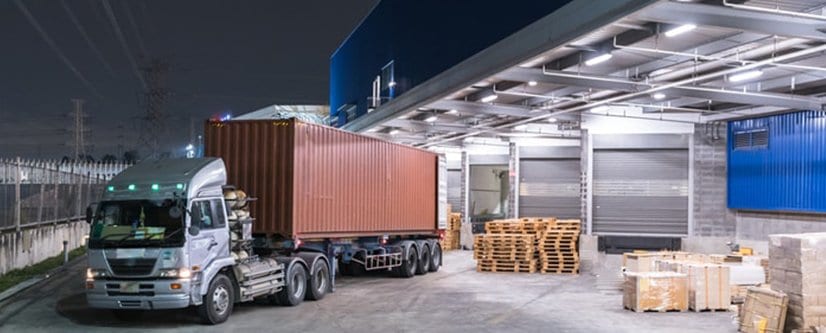Companies pushing toward sustainability often start by examining and improving their own internal processes. However, a recent report from CDP found that a company’s supply chain creates 5.5 times more greenhouse gas emissions than they do in-house.There are big opportunities for companies to become more sustainable by directing their focus to elements beyond their walls. The question then becomes: how can you build sustainability into a supply chain that’s largely driven by third-party vendors?The truth: you have more control than you might think.Companies and their stakeholders can work with suppliers to reduce carbon emissions, boost eco-friendly practices, and create positive change. This pressure has significantly increased in recent years and is only becoming more impactful, along with the business cases that are making sustainability a greater priority in the first place.
In this blog post, we will discuss the concept of sustainability and its role in modern supply chain operations. We’ll examine how businesses harness sustainability principles to promote ethical sourcing practices, reduce waste, and collaborate with sustainable suppliers. Additionally, we will look at the inherent challenges of supply chain sustainability and share best practices to improve and optimize your sustainability efforts for your business’s long-term success.
What Is a Supply Chain, and What Constitutes Supply Chain Management?
A supply chain is an integrated network of all individuals, organizations, facilities, activities, and technology involved in the planning, manufacturing, and delivery of a company’s products. It includes processes of coordinating procurement of raw materials, production, inventory management, and delivery of finished products to market.
Supply chain management refers to practices that help organizations optimize the above processes to boost employee productivity, improve operational efficiency, and increase customer satisfaction. It involves monitoring the flow of materials, information, and finances between the supplier, manufacturer, wholesaler, and retailer across different stages, namely strategy, planning, and operation. With effective supply chain management, businesses can save time and costs while achieving a competitive edge in the market.
How do sustainable supply chains work?
Sustainable supply chains operate through the collaboration of different companies pooling their efforts to uphold ethical and environmentally responsible practices across the supply chain. These efforts include sharing information and promoting sustainability compliance for to ensure fair business practices. A prime example of companies coming together and joining forces to combat unethical practices in their industry is the Fashion Revolution movement of 2013.
Working with ethical suppliers in pursuit of sustainability goals is just one aspect of how sustainable supply chains work. Utilizing advanced technological solutions like cloud-based platforms and AI-powered systems is also essential. These tools help create an agile sustainability management process from sourcing and manufacturing to handling logistics and help bring various datasets into a centralized location for better decision-making.
Setting consistent standards and communicating successes to customers are the other factors that help sustainable supply chains thrive. Establishing clear benchmarks, targets, and guidelines and sharing these with stakeholders and all the suppliers for agreement is essential for ensuring compliance. Their compliance can be tracked and managed with digital technologies that exist today. Showcasing the benefits of sustainability initiatives to customers can enhance brand reputation and position companies as industry leaders who lead by example.
Why Is Sustainability Important in the Supply Chain?
Supply chains are mostly responsible for companies’ carbon footprint, as they involve energy-intensive processes for production and transportation. If these processes are optimized for less energy consumption via the use of natural resources like renewable energy, their environmental impact can be significantly reduced. Here are more reasons for why sustainability is important in supply chains:
Consumer and Investor Demands:
With increasing awareness of unethical supply chain practices like child labor, forced labor, and gender discrimination among consumers, companies actively look for ways to minimize the social and environmental impacts of their supply chain operations. Similarly, investors also prioritize investing in companies that follow socially and environmentally sustainable practices to avoid tarnishing their reputation by investing in companies following unsustainable supply chain practices.
Addressing Climate Change and Global Disruption:
Organizations have the power to mitigate climate change by adopting sustainable production practices, which help conserve natural resources for future generations while driving consumer support. Adverse effects of unethical production practices, such as pollution and deforestation, underscore the need for sustainable solutions to protect communities and save the planet.
Building Supply Chain Resilience:
Sustainable supply chain practices improve resilience during vulnerable times, such as when environmental degradation may impact workforce availability.
Three components of sustainable supply chains
Understanding the components of sustainable supply chains is essential for businesses looking to adopt sustainability into their operations to minimize their impact on the environment and uphold ethical and social standards.
Green Supply Chain
Implementing green supply chain processes involves incorporating environmentally conscious practices for sustainable sourcing, product design, manufacturing, logistics, and product disposal.
Transparent Supply Chain
Achieving supply chain transparency necessitates openly sharing information about materials, labor, and supply chain practices. Despite challenges in implementation, businesses continue to invest in environmentally responsible practices.
Circular Supply Chain
This involves creating a closed-loop circular economy by disassembling products into components and using these components to create a new product. The reuse of parts and repurposing of products help businesses recycle goods and recover costs in the process.
Sustainability Data: Finding the Missing Link in the Supply Chain

When companies can manage and improve their performance throughout the supply chain, they are better positioned to conserve resources, lower costs, optimize processes, uphold corporate values, and improve consumer sentiment.
However, the scale and complexity of supply chains make it difficult for companies to improve the sustainability performance within these systems.
To overcome these challenges of complexities and scope, companies are starting to more closely scrutinize the environmental data provided by their suppliers. Many purchasers are refusing to work with suppliers with poor environmental performance and are sending a loud and clear message to other suppliers in the process. CDP’s global head of supply chain, Sonya Bhonsle, noticed an uptick in the number of purchasers using disclosure to spur positive action in the supply chain.
Regardless of the complexity of improving the supply chain, the implications of not finding more sustainable supply chain management processes could lead to two bigger risks — one to the environment, and one to the consumers they serve.Here’s a closer look at some of the top supply chain sustainability practices driving the industry.
Map the Entire Supply Chain

What does the supply chain look like from end to end?Before you can affect change within your supply chain, you need to gain a comprehensive understanding of how your supply chain looks and functions.
Start by gathering an inventory of your suppliers, then map out each supplier’s role in your company. What are you sourcing from them and for what percentage of your raw materials does that supplier account? How much do those raw materials cost? What are their social and economic challenges? From there, you can prioritize your sustainability efforts with each supplier.
For example, New Balance Athletic Shoe Inc. limited its number of suppliers (largely based on sustainability-related decisions) and reduced the size of its supply chain by 65 percent. With fewer suppliers, the company is now able to focus on building stronger partnerships with remaining partners.
Another example is CH2M Hill’s development of a supply chain sustainability strategy. The company classifies each supplier based on environmental performance-related criteria and will prioritize business with suppliers that value sustainability. In many cases, companies can start to set classifications and work with suppliers to get them up to speed with new requirements.
Set and Report on Key Targets
With compliance standards in place, you can begin to collect key environmental data from suppliers that will allow you deeper insight into your supply chain. Many retailers as well as the U.S. government are leveraging surveys and questionnaires to understand supplier performance, as well as communicate back to them to provide constructive feedback for future improvements.
In addition, companies are increasingly requesting information related to emissions, water risks, and deforestation activities (e.g. timber, palm oil, cattle, and soy). For example, in 2018, 115 major organizations requested environmental data from more than 5,500 suppliers. In turn, those suppliers reported a collective reduction of 633 million metric tonnes of carbon dioxide, resulting in a cost savings of $19.3 billion.
Requesting environmental data sends a clear message to suppliers that environmental practices are of the utmost importance, and poor performance won’t be tolerated.
Mandate Supplier Performance
Companies that build sustainability into their corporate culture are better positioned to emphasize its importance throughout the supply chain. Corporate values extend to customers, strategic partners, and suppliers and should be included in a supplier code of conduct to set the right expectations for suppliers.
There are numerous resources available to help companies create a supplier code of conduct, including the United Nations Global Compact’s Supply Chain Sustainability practical guide. Another tool created by the Global Environment Management Initiative can help you identify areas of opportunity and provide case studies of companies that have leveraged similar opportunities.
Collaborate with Industry Players

Share the responsibility with peer companies. Companies that have explored sustainability efforts in the supply chain recognize the challenges are often too complex to be solved with individual attempts. Peer companies may find it beneficial to work together to create industry best practices and standards surrounding supply chain sustainability and evaluate suppliers based on similar metrics.
These collaborations can help to share the workload and prevent overwhelm from auditing, training, and paperwork, along with gaining and sharing knowledge regarding a supplier’s sustainability performance.
One example of this in action is Sephora’s “Clean at Sephora” initiative. Sephora has, for many years, enabled online shoppers to quickly check for unwanted ingredients in its online products with a ‘what it is formulated without’ section. But in 2018, the brand took the concept a bit farther down the sustainability path.
Artemis Patrick, chief merchandising officer for Sephora, noted in an interview with Allure magazine: “Together with Sephora’s brands, industry experts, external council — including feedback from clients — Sephora has curated a partnership with its brands across cosmetics, skincare, haircare, and fragrance that stand behind the ‘Clean at Sephora’ category.”
The new category and seal will clearly establish what Sephora and their customers consider clean beauty based on vetoed ingredients which were chosen due to concerns ranging from health to the environment.
Benefits of Supply Chain Sustainability
Supply chain sustainability not only benefits companies by serving their interests and those of the stakeholders but also contributes to the well-being of society and the planet. With the increasing risks posed by climate change, such as extreme weather events and resource scarcity, businesses recognize the need to make sustainability a part of their core business ethics to ensure their long-term success. Outlined below are five key benefits businesses can derive from sustainability:
Optimizing Supply Chain Operations
Collaborating with ethical suppliers to set emission targets and identify areas for improvement can trim energy costs and foster environmental responsibility. Moreover, such efforts enhance supply chain efficiency, reduce risks, and strengthen relationships with suppliers, ultimately resulting in long-term sustainability and competitiveness in the market.
Strengthening Branding
Today, discerning consumers’ concern about product compositions and production methods has intensified. According to MIT’s Sloan School of Management, consumers are willing to pay a premium of 2-10% for products that share this information on packaging and offer supply chain transparency. This emphasizes the increasing value of transparency in supply chain operations and ethical sourcing practices.
Promoting Investor Relations
Institutional investors are extremely wary of the reputational and financial risks associated with unsustainable supply chain operations. Media reports highlighting the irresponsible practices of some companies have negatively impacted their stock prices. These practices include sourcing machinery from overseas, hazardous working conditions, pollution by suppliers, and procurement of defective or toxic materials. Therefore, adopting sustainability principles can attract more investors interested in sustainable investment funds.
Redefining Corporate Culture
Recently, more and more millennials have started to prioritize finding purpose in their work. This plays out in favor of companies proactively implementing sustainable practices, as they can successfully attract and retain employees with their culture and values founded on sustainability. Adhering to sustainable practices not only appeals to Millennials but also fosters a positive corporate image, boosting employee engagement and retention.
Ensuring Compliance
Governments worldwide are increasingly enforcing global supply chain sustainability principles to promote the United Nations’ 2030 Sustainable Development Goals, such as clean water access for all. These government regulations are applied across various sectors, including pharmaceutical traceability, electronics disposal, and conflict mineral avoidance, to ensure compliance with ethical practices and contribute to global sustainability efforts.
Challenges of Supply Chain Sustainability
Implementing sustainable practices within supply chains presents multifaceted challenges for businesses across the globe. Here are the five most commonly faced challenges:
Complexity in Supply Chains
Sustainable supply chains need to tackle complexities that arise due to the interdependence of businesses and the challenge of monitoring vendors’ performance across tiers. Many companies have intricate supply chain networks spanning different countries, where sustainability may or may not be enforced. Establishing transparent partnerships with suppliers is crucial for implementing responsible practices throughout the supply chain.
High Sustainability Costs
Implementing sustainable practices incurs costs, which creates a significant barrier for many small and mid-sized companies. The costs encompass hiring sustainability specialists, compliance monitoring, and evaluating the suppliers’ adherence to sustainability guidelines. While initial expenses can be high, experts find that sustainable supply chains can eventually reduce costs and break even. Therefore, companies should seriously consider investing in mapping supply chains and early adoption to maintain market competitiveness.
Lack of an Established Framework
Rapidly evolving regulations on environmental, social, and governance (ESG) risks make it challenging for companies to lay down robust, sustainable supply chain frameworks. Governments around the world are implementing fluid ESG policies, which means organizations must adapt quickly. Strong support from leadership and government is essential for navigating these regulatory complexities and developing sustainable strategies.
Inadequate Resources for Implementation
Transitioning to sustainable supply chains calls for having proper resources, including strategic planning and skilled personnel. The lack of well-defined strategies and experienced professionals can create bottlenecks during implementation. However, investing in training and development, supported by government initiatives, can fill these resource gaps and cultivate a competent workforce well-versed in sustainability methods.
Non-Availability of Right Technologies
While several technologies like IoT and AI offer ways to enhance sustainability, their integration into supply chain operations can be difficult. The dynamic nature of sustainability regulations and evolving requirements hamper the development of suitable technologies. Despite these hurdles, companies like Walmart have successfully deployed innovative technologies, demonstrating the potential for leveraging technology to address sustainability challenges in supply chains.
Supply chain sustainability best practices
Businesses are under increasing pressure to enhance supply chain sustainability, and its benefits for the bottom line cannot be ignored. By adhering to these best practices, you can create a comprehensive sustainable supply chain strategy that identifies crucial participants, sets both short- and long-term goals, establishes a well-defined timeline, allocates appropriate funding, implements intelligent workflows, creates digital solutions to revolutionize processes, and effectively measures progress.
Baseline
Assess your supply chain operations and understand how they are leaving an impact on the environment.
Educate
Stay updated about industry standards, sustainable development goals, evolving legislation, and government regulations by following information sources relevant to your business.
Benchmark
Collaborate with relevant peers to exchange knowledge, set goals, and develop sustainable practices that are both practical and easy to uphold over time.
Set BHAGs
Set big, hairy, audacious goals that push boundaries and drive progress without fear of failure. These goals emphasize pursuing learning and growth relentlessly through an enthusiastic approach, something that quarterly and yearly goals fail to do.
Measure
Utilize software tools to create and manage checklists to measure and audit your progress against BHAGs. Regularly publish results to keep teams on track.
Communicate
The C-suite executives must assume responsibility for communicating the mission, supporting sustainability programs, engaging employees, and sharing progress and lessons learned along the way.
Revisit
Sustainability is an ongoing mission, so it must be pursued with unwavering dedication. Even when you achieve goals, set new ones and continuously push the supply chain to new heights.
Use Specification Data Management™ Software to Monitor Sustainability Progress
As sustainability management processes are being explored, companies may find it beneficial to dial in on their supply chain at the spec level to identify additional opportunities and track sustainability progress.
Specification Data Management can help you manage the DNA-level data throughout your supply chain. For example, you can track supplier certifications or agreements and link suppliers to the specs (raw materials, packaging, etc.) they produce. You can then verify material sources, identify material substitutions to save money and increase eco-friendliness, and pinpoint sources of waste.
Furthermore, when you capture and map supplier locations to specifications, you can also measure the related CO2 impact. When you find sustainability issues in the supply chain, you can trigger bids to replace those materials and find the supplier that best fits your strategy.
When you can visualize specs across your supply chain at a granular level, you’re better able to analyze the materials you’re using and reveal potential bottlenecks that could be hindering sustainable practices. Through Specright’s analytics, you can prevent unwanted materials from entering your supply chain to begin with.
Traditionally, companies gave little thought to how their suppliers handled environmental activities, but change is here. Companies have come to appreciate the sustainability efforts made by their suppliers and are seeing their own benefits in the process. Those that continue to invest in improving their supply chains may be best positioned to build resilience as sustainability becomes more of a necessity.
Download our eBook to learn how to advance sustainability from idea to reality.
Explore More Blogs
Get Started
With Specright’s Solution Suite, you can digitize, centralize, and link your specification data to drive efficiencies, intelligence, traceability, and collaboration within your organization and across your supply chain network.




